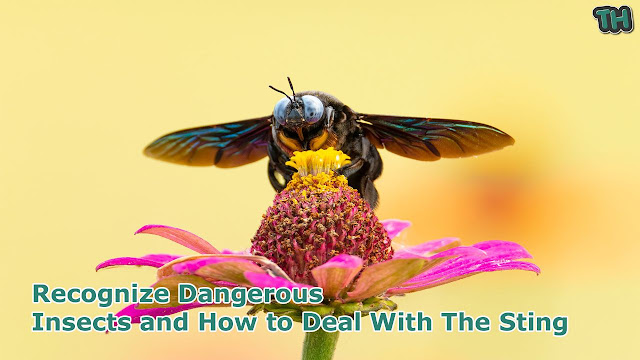Recognize Dangerous Insects and How to Deal With The Sting
Initial stings are common things. However, certain dangerous insects can threaten their lives, if not handled properly.
Insect stings or bites can cause different symptoms depending on the type of stinging insect. However, if the insect stings cause severe allergic reactions, then need the right treatment so as not to have an impact on more serious health conditions.
Various types of dangerous insects
Dangerous insects are the term of the type of insects that the sting can cause a reaction or condition for harmony for human health. Here are some types of harmful insects commonly found:
Mosquito
Mosquitoes are insects that are stinging skin and suck your blood. Mosquito stings can cause lumps of pain, redness, and swelling. Not all mosquitoes are dangerous, but some mosquitoes can become vectors or spreaders of serious diseases such as Chikungunya, Dengue Hemorrhagic Fever (DHF), Zika, and Malaria Viruses.
Ant fire
Although the size is very small, ants should not be considered trivial. Because some ant types have harmful effects. One of them is a reddish yellow fire ant. In addition to redness and swelling on the skin, as well as stings that can be hurt so painful, fire ants can cause serious allergic reactions in people who are allergic to the sting.
Bee
The symptoms that arise due to bee stings are usually not severe, but for someone who has allergies to bee shock, it can cause a serious reaction and need immediate handling. Of course, the bee stings are different from other hazardous insect stings, because the bee shock leaves the stinging thor of the tail (stinger) in your skin, which needs to be taken immediately. In addition, the treatment also needs to prevent dangerous allergic reactions.
How to deal with hazardous insects
Harmful sting handling of insects varies greatly depending on what type of insect is stinging. Mosquito stings are generally mild, but if the symptoms have an impact on fever, itching, and especially shortness of breath, they must be immediately given a doctor's handling.
Mosquito stings can be avoided by doing ways to drive mosquitoes, for example, diligently cleaning the room or room and routinely draining water in the bathtub so as not to become a nest of mosquitoes. However, if after the mosquito shock occurs you have a high fever for more than 3 days, it is recommended to see a doctor.
Whereas in handling the sting of fire ants, the first step you must do is release the ant from your skin first, then wash the skin that is sick, after that you can compress with cold water to relieve itching and reduce swelling.
Handling bee shock is carried out based on the reaction that appears. If the bee shock does not cause an allergic reaction, then you can do the treatment by removing the bee sting. Be careful when clamping the sting to revoke it from the skin, because poisons in the sting can be depressed out and into the body.
When hesitant to revoke it with a finger or tweezers, you can use objects with a flat and hard surface, such as an ATM card or identification card. The trick, place the edge of the card on the skin near the stinger, then press and slide it towards the shock, to push the sting out.
However, avoid squeezing or gouging locations that are stung using fingers or nails, so that the stingfare is not pushed deeper and poisons do not spread or increasingly enter the body. Then, paste cold compresses into the skin to reduce the pain.
However, if the bee shock causes an allergic reaction to the difficulty of breathing or a decrease in consciousness, then the help is carried out in an emergency, and it is necessary to be helped by a pulmonary heart resuscitation procedure. Then, it needs to immediately get medical help to overcome allergic reactions experienced, especially to be able to breathe again freely.
Even though it looks small, pay attention to the reaction or symptoms that appear after hazardous insects. If the reaction that appears is getting worse, consult the condition with the doctor or visit the nearest Emergency Gesture Installation.


Post a Comment for "Recognize Dangerous Insects and How to Deal With The Sting"